
Do you have a question about the Yamaha RAPTOR EFI 110 2024 and is the answer not in the manual?
| Brand | Yamaha |
|---|---|
| Model | RAPTOR EFI 110 2024 |
| Category | Offroad Vehicle |
| Language | English |
Key safety instructions and advice for ATV operators.
Guidance for parents regarding children operating the ATV.
Explanation of symbols and notations used in the manual.
Critical notice regarding the ATV's intended off-road use.
General information on VIN, model, and key identification numbers.
Location and purpose of the 17-digit VIN.
How to identify the ATV model and its codes.
How to find and use the key identification number.
Visual guide to the location of all important labels on the ATV.
General hazards associated with ATV operation and severe injury risks.
Essential rules for safe ATV operation, including protective gear.
Visual overview of ATV parts from left and right views.
Identification and location of ATV controls and dashboard instruments.
Operation of the main switch and explanation of indicator/warning lights.
Functions of handlebar switches, start switch, and throttle lever.
Operation of front, rear, and parking brake levers.
How to operate the drive select lever for forward, neutral, reverse.
Fuel tank cap and fuel level checks.
Procedures for removing/installing the seat and adjusting shock absorbers.
Procedures for checking fuel, engine oil, and transmission oil.
Checks for front/rear brakes, tires, and tire wear.
Ensuring chassis fasteners and instruments are functional.
Step-by-step instructions for starting the ATV's engine.
Operating the drive select lever and shifting gears, including reverse.
Recommended procedure for breaking in a new engine.
Correct methods for parking the ATV, including on slopes.
Guidelines for installing accessories and loading cargo safely.
Procedures and warnings related to towing the ATV.
Basic familiarization with the ATV's operation and controls.
Key principles for safe riding, including training and judgment.
Recommended apparel and protective equipment for riders.
Advice on riding on different surfaces, inclines, water, and rough terrain.
Proper techniques for turning, climbing, and descending hills.
Strategies for managing skidding, sliding, and riding over obstacles.
Importance of regular inspection, adjustment, and lubrication.
Location and use of the owner's manual and included tool kit.
Scheduled maintenance for emission control components.
Routine checks and lubrication for various ATV parts.
Procedures for checking spark plugs, engine oil, and transmission oil.
Cleaning and maintenance of the air filter element and spark arrester.
Checking and adjusting brake shoes, levers, and cables.
Adjusting drive chain slack and lubricating drive chain/cables.
Lubricating front arm pivots, knuckle pivots, and steering shaft.
Battery care, charging, and fuse replacement procedures.
Procedures for removing, installing, and checking wheels.
Steps to diagnose and resolve common ATV issues.
Guidelines for washing and cleaning the ATV.
Proper methods for short-term and long-term ATV storage.
Key physical measurements and weight specifications for the ATV.
Details on engine type, oil, fuel, and transmission oil requirements.
Specifications for tires, brakes, and suspension systems.
Information on the battery and electrical system voltage.
Information on vehicle emission control and noise regulations.
A logbook for recording maintenance service dates and details.
Details on what the ATV warranty covers and excludes.
Owner's duties for warranty and how to obtain service.
Common queries regarding warranty terms and coverage.
Advantages and coverage details of the Yamaha Extended Service plan.
How to obtain and utilize the Y.E.S. plan for extended protection.
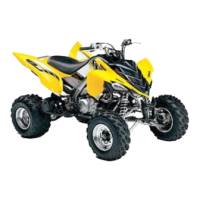
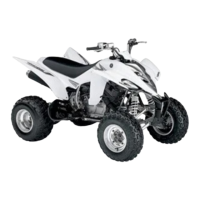
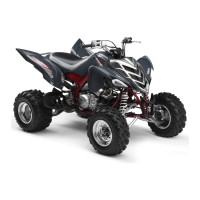
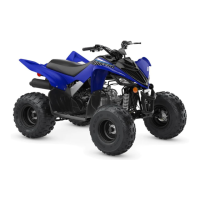
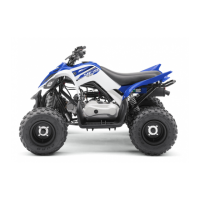

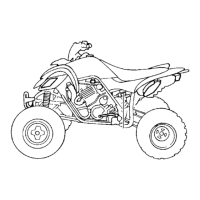

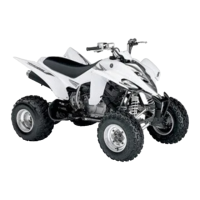
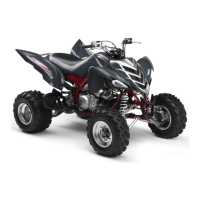
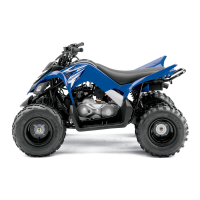
